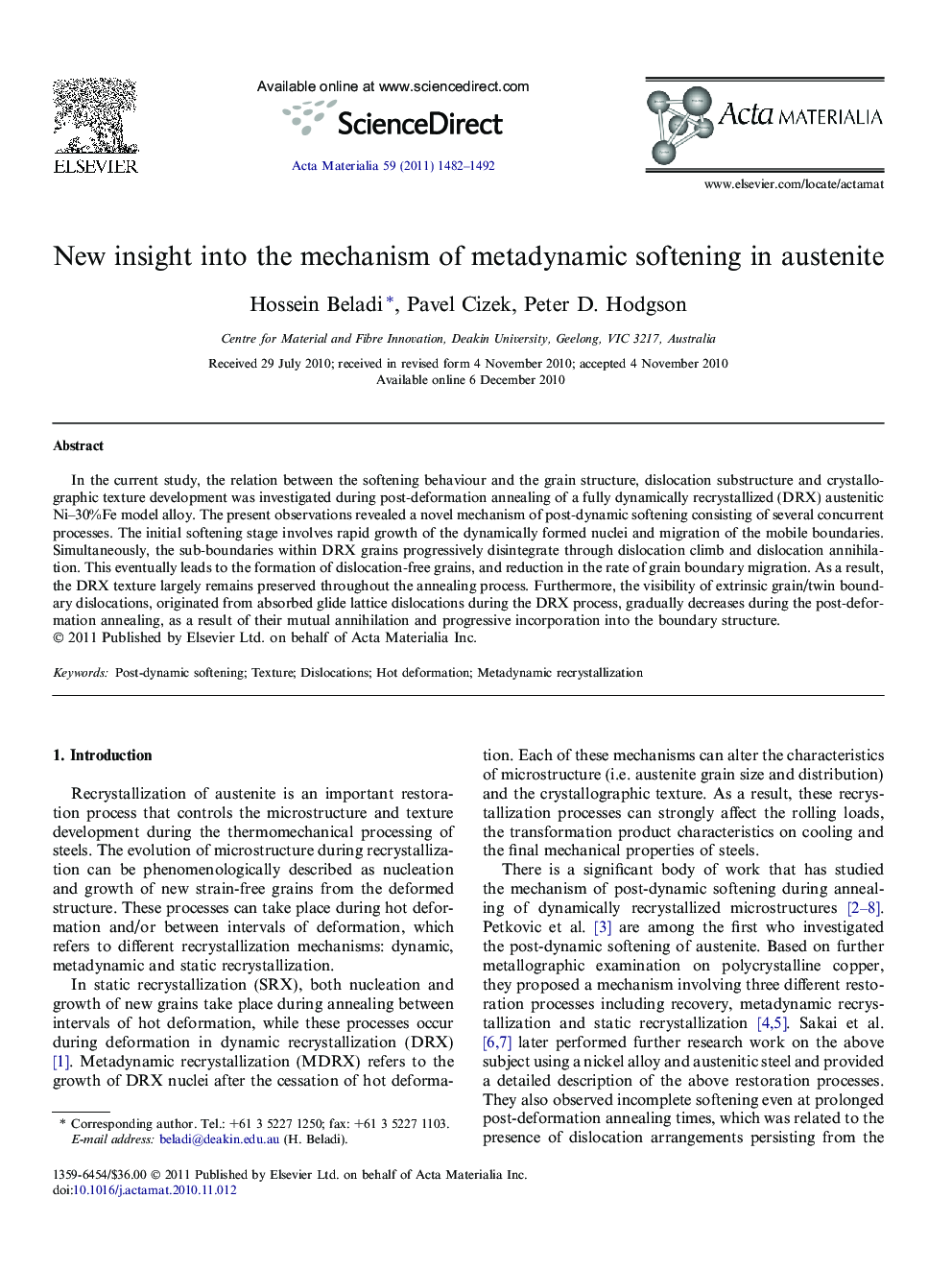| Article ID | Journal | Published Year | Pages | File Type |
|---|---|---|---|---|
| 10620603 | Acta Materialia | 2011 | 11 Pages |
Abstract
In the current study, the relation between the softening behaviour and the grain structure, dislocation substructure and crystallographic texture development was investigated during post-deformation annealing of a fully dynamically recrystallized (DRX) austenitic Ni-30%Fe model alloy. The present observations revealed a novel mechanism of post-dynamic softening consisting of several concurrent processes. The initial softening stage involves rapid growth of the dynamically formed nuclei and migration of the mobile boundaries. Simultaneously, the sub-boundaries within DRX grains progressively disintegrate through dislocation climb and dislocation annihilation. This eventually leads to the formation of dislocation-free grains, and reduction in the rate of grain boundary migration. As a result, the DRX texture largely remains preserved throughout the annealing process. Furthermore, the visibility of extrinsic grain/twin boundary dislocations, originated from absorbed glide lattice dislocations during the DRX process, gradually decreases during the post-deformation annealing, as a result of their mutual annihilation and progressive incorporation into the boundary structure.
Related Topics
Physical Sciences and Engineering
Materials Science
Ceramics and Composites
Authors
Hossein Beladi, Pavel Cizek, Peter D. Hodgson,
